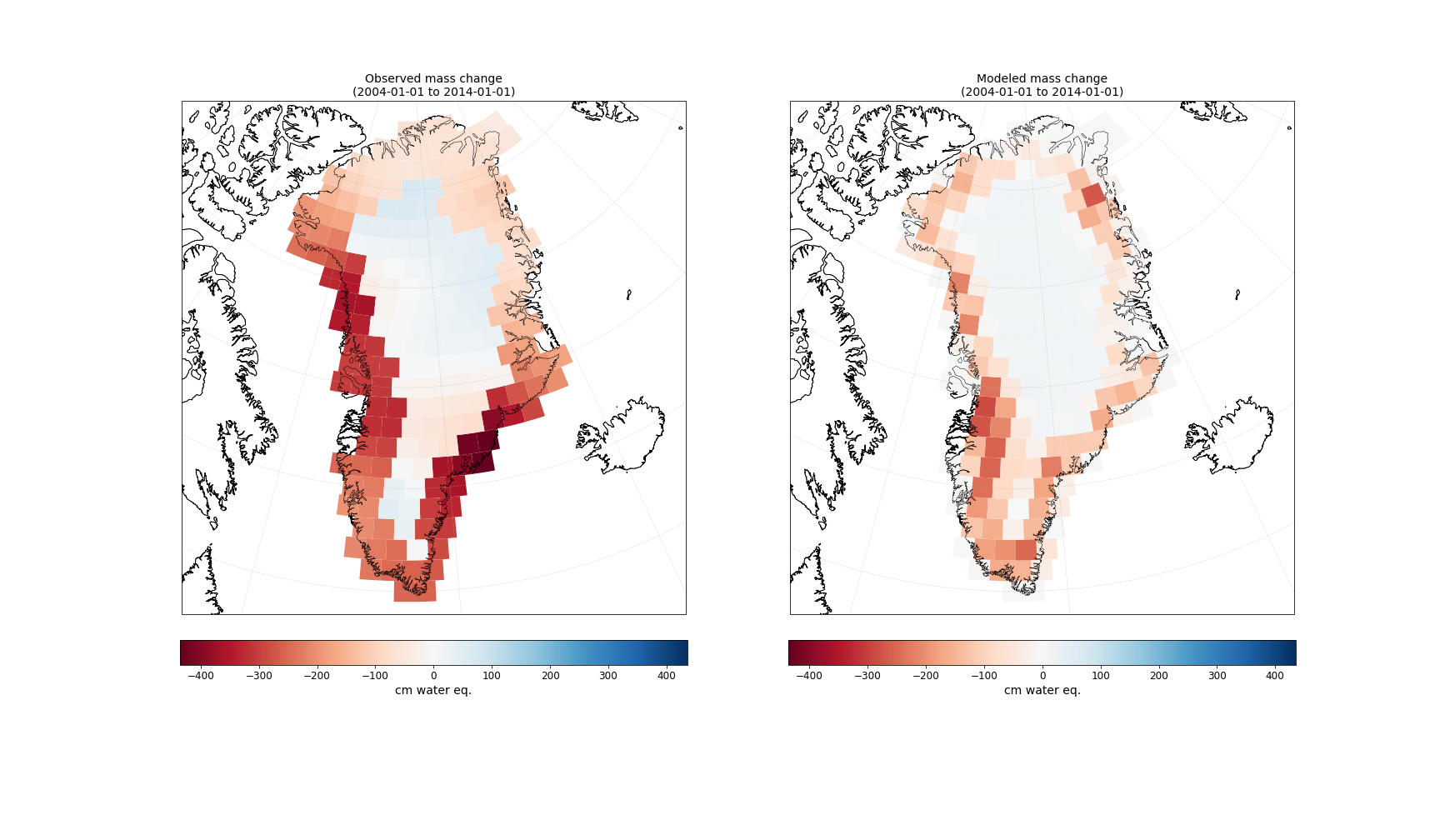This tool version is unpublished and cannot be run. If you would like to have this version staged, you can put a request through HUB Support.
CmCt GRACE MASCON Tool
The Cryosphere model Comparison tool (CmCt) GRACE Mascon Module compares user uploaded ice sheet models to the GRACE Mascon product derived by NASA GSFC.
Launch Tool
Archive Version 1.6
Published on 16 Aug 2021
Latest version: 1.7. All versions
This tool is closed source.
Category
Published on
Abstract
The Cryosphere model Comparison tool (CmCt) GRACE (Gravity Recovery and Climate Experiment) Mascon tool compares user uploaded ice sheet model to GRACE Mascon data derived from the GRACE satellite.
The GRACE satellite records time series of ice sheet mass change. GRACE, launched in 2002 and retired in September 2017, is a dual-satellite mission with the primary objective of measuring the gravity field of the Earth as it changes over space and time (Wahr et. al., 1998). It does this by very accurately measuring the distance between the two satellites (to within a few micrometers), which are flying one behind the other in the same orbit, about 200 km apart and 400-500 km above Earth’s surface. Precisely measuring how the Earth’s gravity tugs each of the satellites differently allows for the calculation of changes in Earth’s gravitational potential field. GRACE has many limitations. One of the most important is that GRACE provides data with relatively low spatial resolution. The major difficulty when comparing GRACE to ice sheet model output is scaling the two datasets to comparable spatial resolution.
The CmCt GRACE Mascon tool uses the GRACE Mascon solution that was processed at NASA GSFC (Luthcke et al., 2013). The CmCt processes the model to create the same mascon space as the NASA GSFC GRACE Mascon product and therefore bringing the ice sheet model and GRACE data to the same spacial resolution for comparison. After the interpolation to the same mascon space has been achieved the ice sheet model gets averaged over within the mascon space to provide a direct qualitative comparison.
We would like to acknowledge and thank to Michael Croteau and Bryant Loomis at NASA GSFC for providing the GRACE Mascon data product and contributing to the code.
Datasets Description
The tool currently uses the 'GSFC.glb.200301_201607_v02.4-GeruoA' GRACE mascon product from 2003 to 2016 that can be requested at the NASA GSFC dataset main distribution site (This dataset is also included when the code is downloaded). Future development will include adding the data from the GRACE-FO (GRACE Follow-On) mission to have the full time range from 2003 to 2021.
Ice sheet model data upload requirements
The CmCt Grace Mascon tool expects thickness data (lithk variable) for the comparison.
At time of writing, the models MUST be defined on a rectangular X-Y grid in the ISMIP6 standard projected polar-stereographic space. (Note, NOT a lat-lon grid!) The ISMIP6 standard projection is defined here.
The GRACE data range used here goes from 2013 to 2016. The desired model time range for the comparison can be set in the appropriate cells. A single file can be uploaded that includes multiple years. The start and end date range can be selected within the jupyter notebook cells.
How the tool works
- Upload the data
- Set Time Range for Comparison
- Plot GRACE Mascon and Ice Sheet Model Comparison
Tool Output
The CmCt creates the GRACE mascon plot and the model mascon plot so the user can qualitatively compare the model output with the observational data. The plots can be easily downloaded with the Download Plot tab.

Future developments
- Adding Antarctica comparison
- Adding GRACE follow-on data
- Quantitative comparison statistics
References
Luthcke et. al., (2013). Antarctica, Greenland and Gulf of Alaska land-ice evolution from an iterated GRACE global mascon solution, Journal of Glaciology, Vol. 59, No. 216, 2013 doi:10.3189/2013JoG12J147
Wahr et. al., (1998). Time variability of the Earth's gravity field: Hydrological and oceanic effects and their possible detection using GRACE, Journal of Geophysical Research, Vol. 103, Issue B12, 1998 doi:10.1029/98JB02844
Cite this work
Researchers should cite this work as follows: